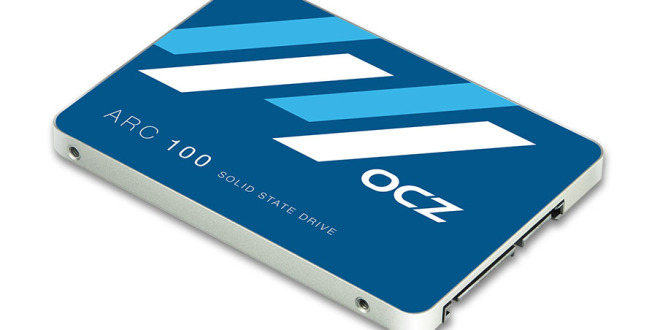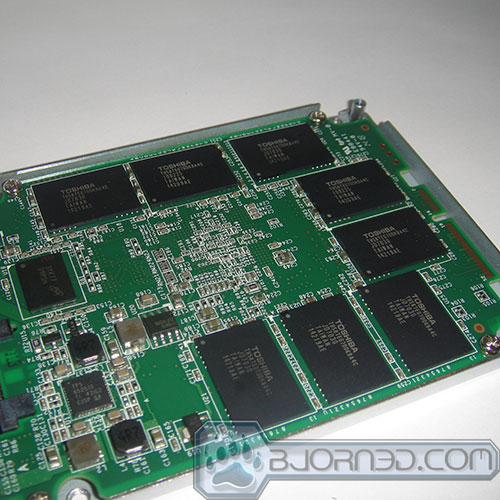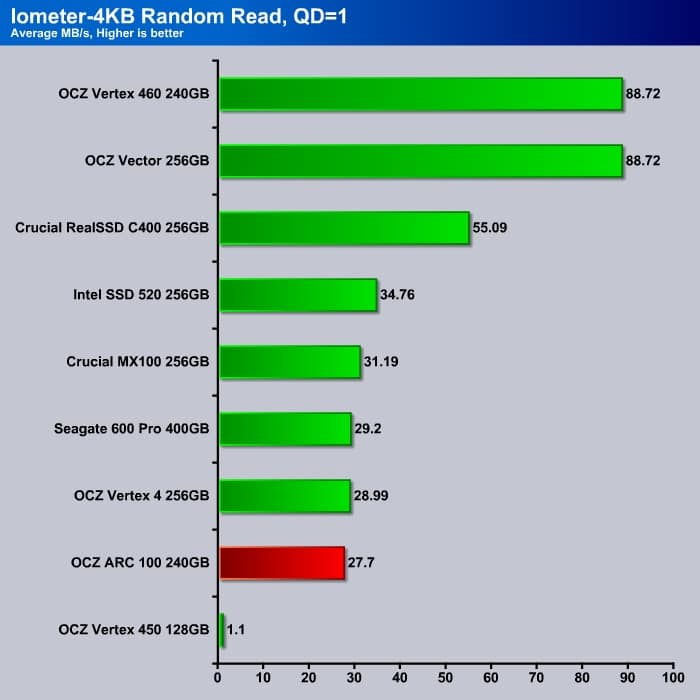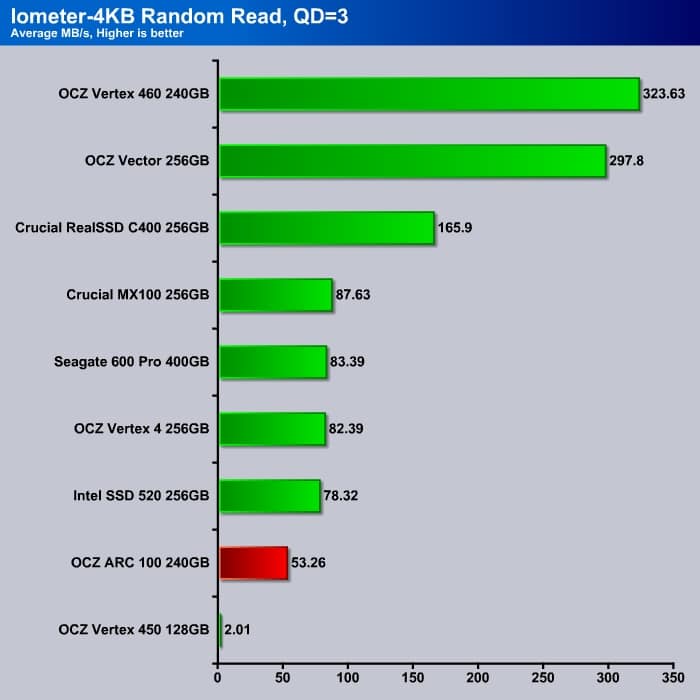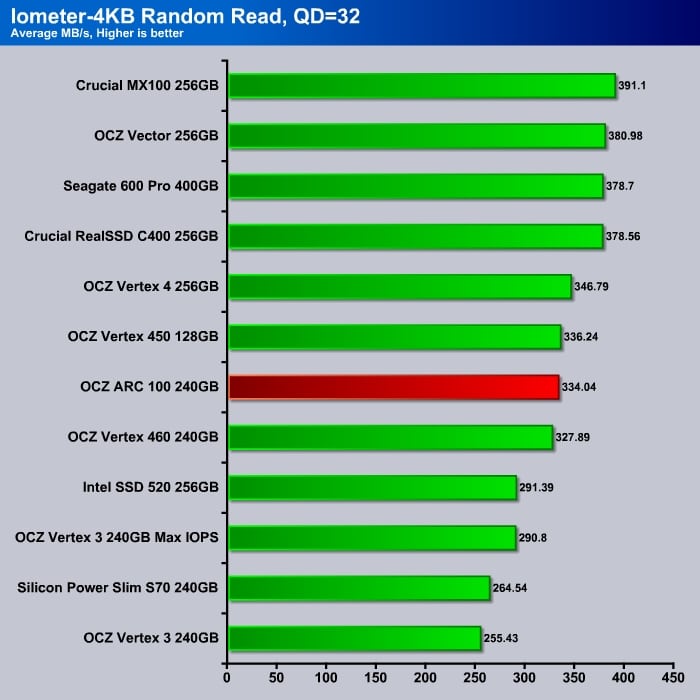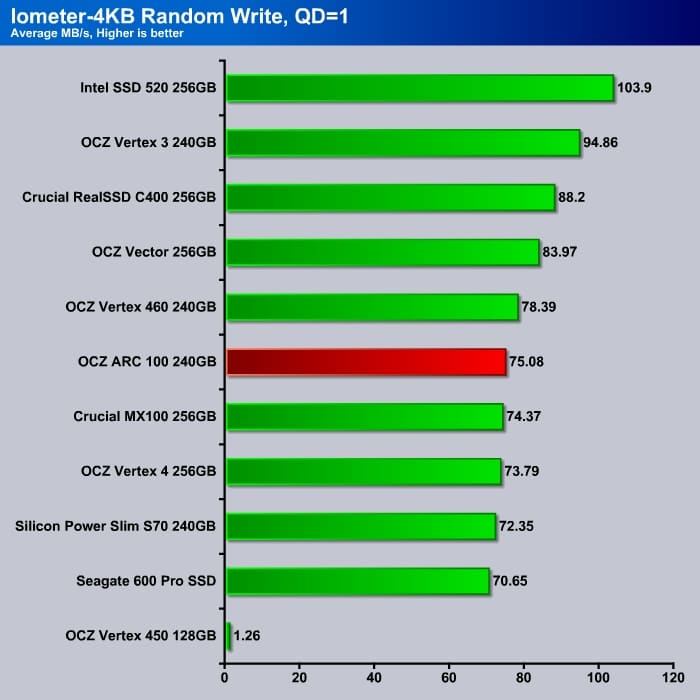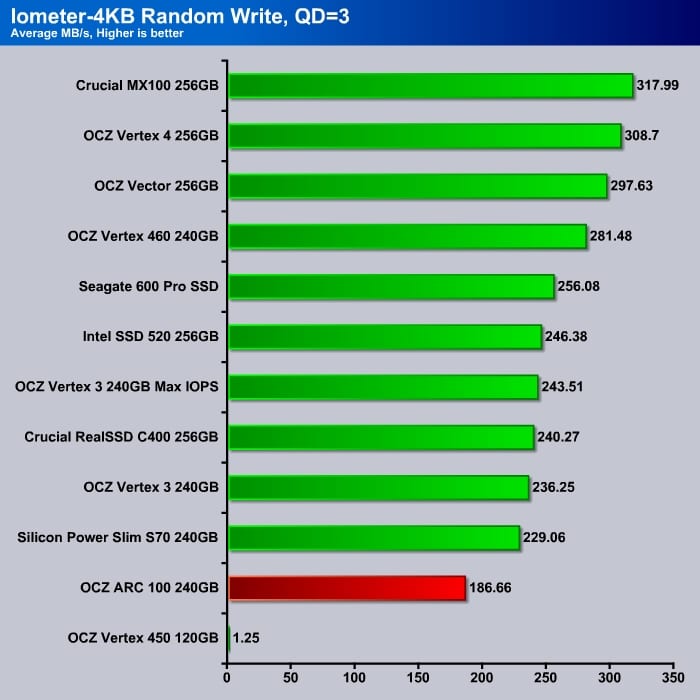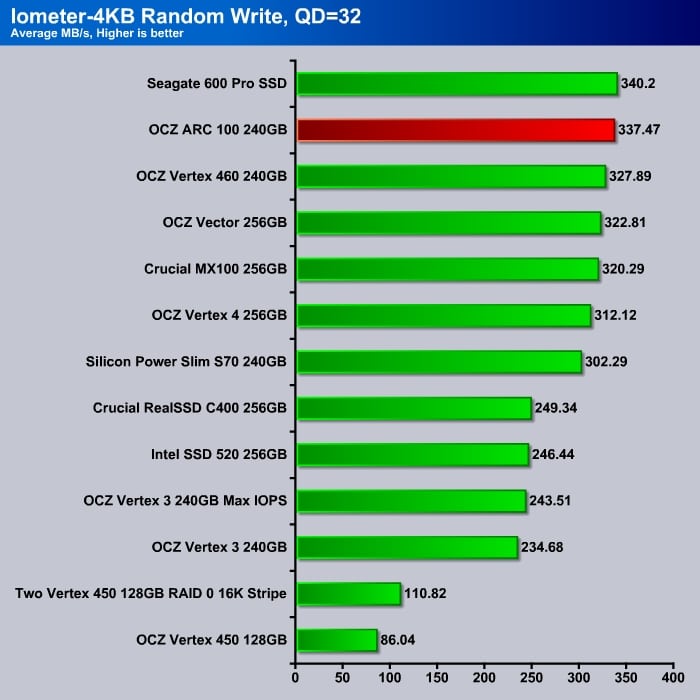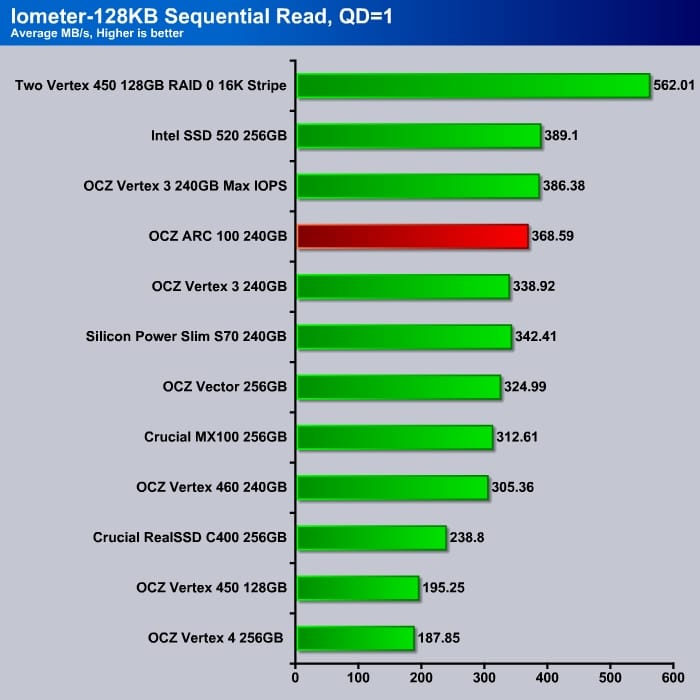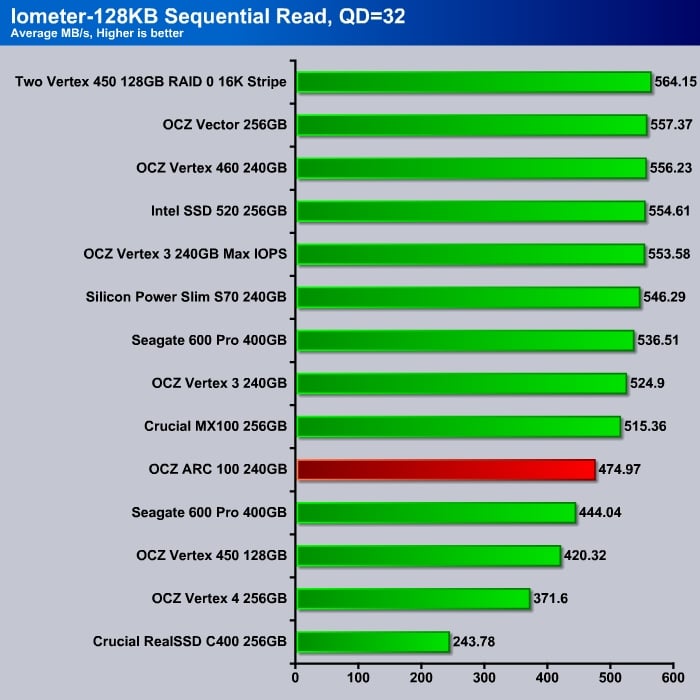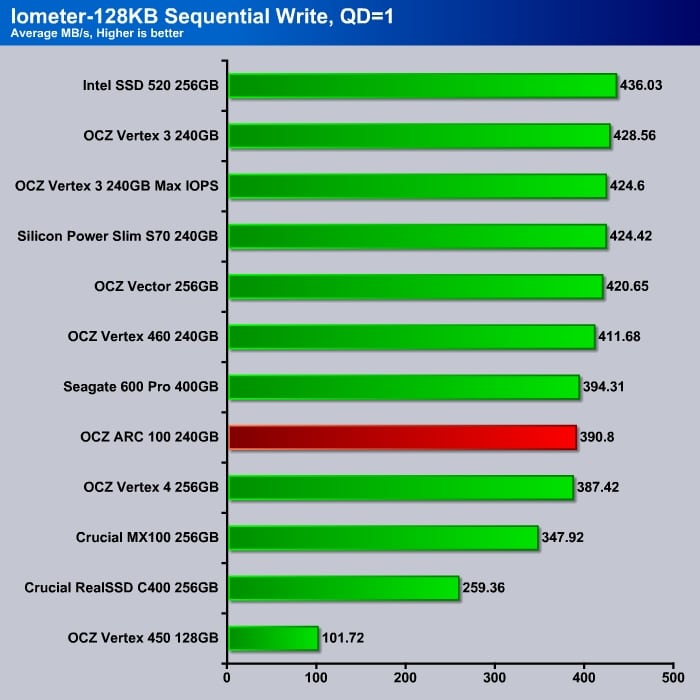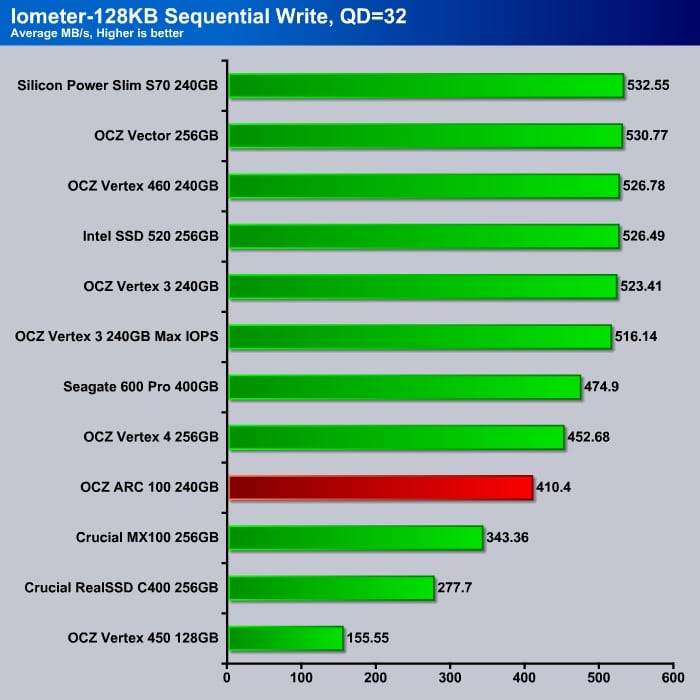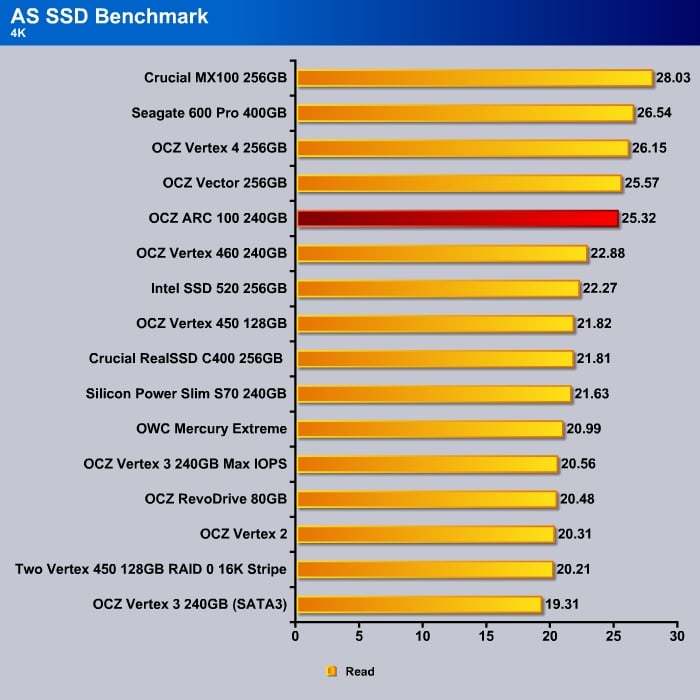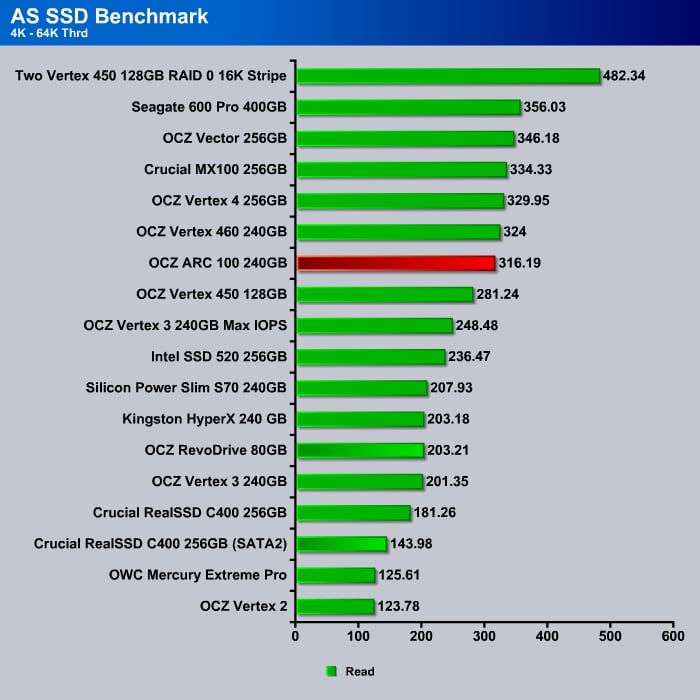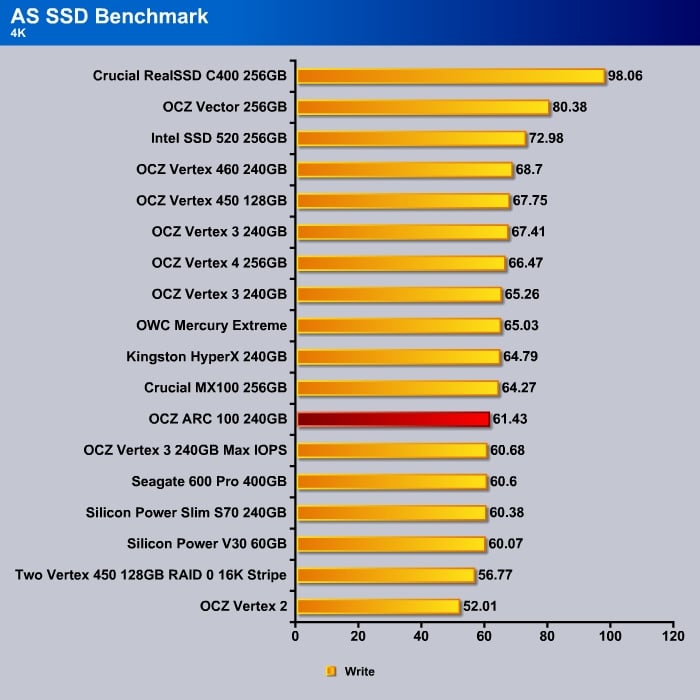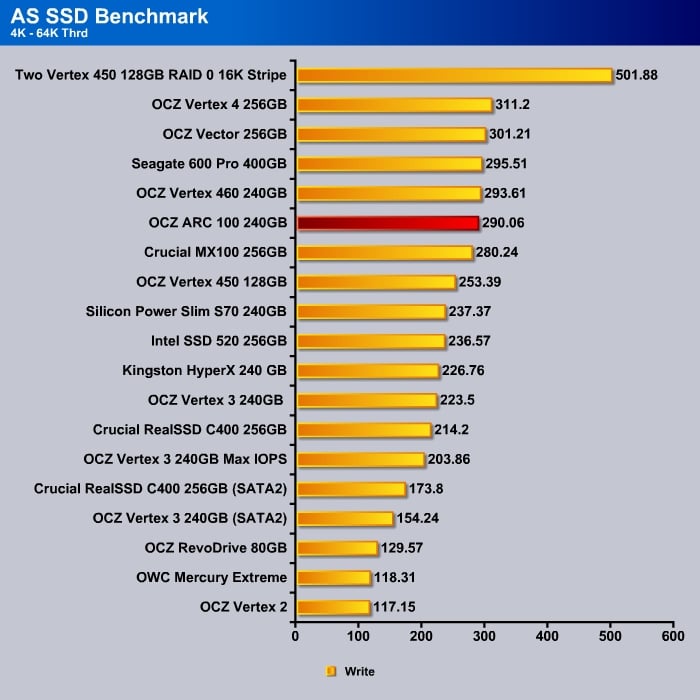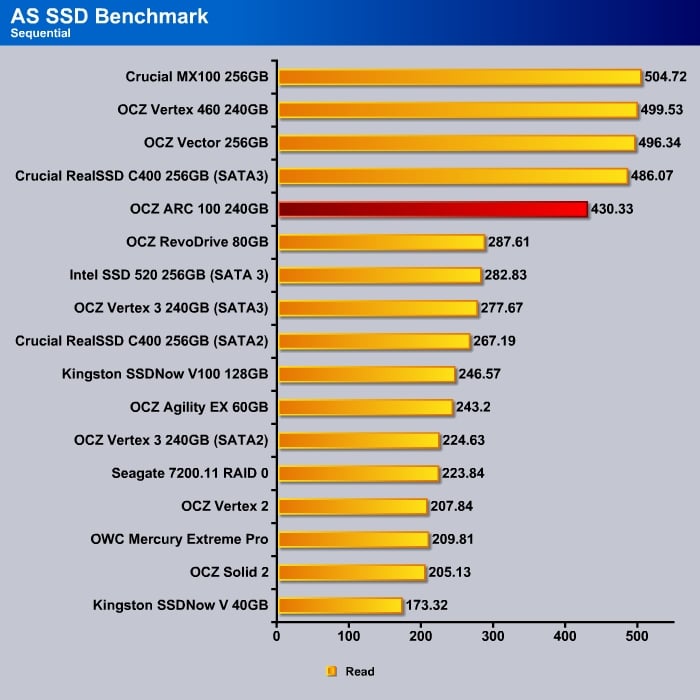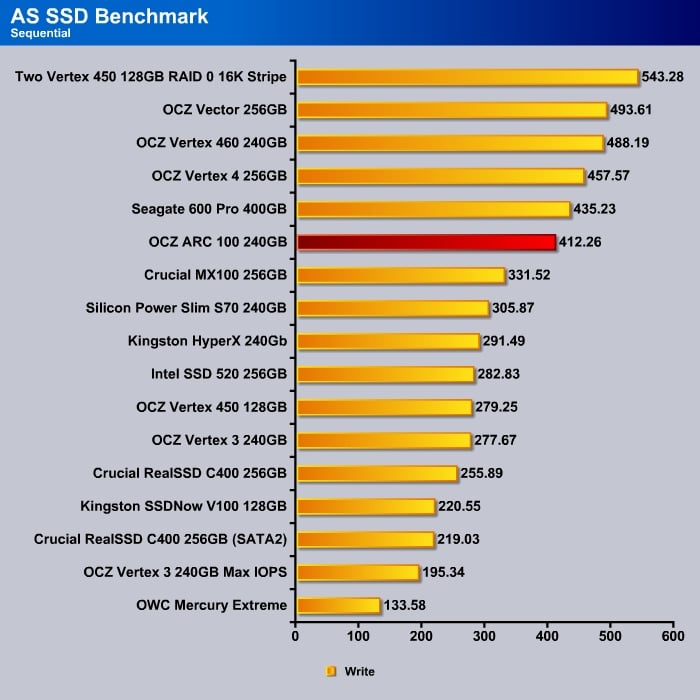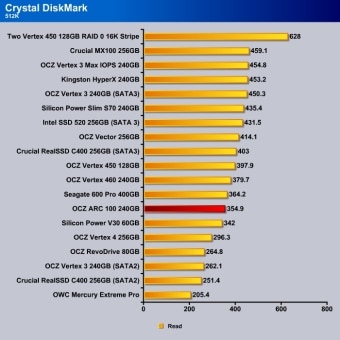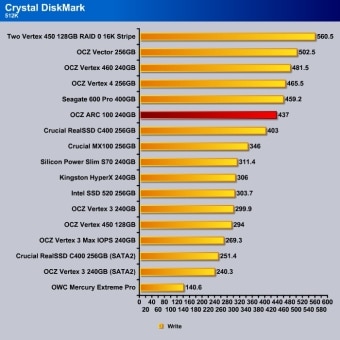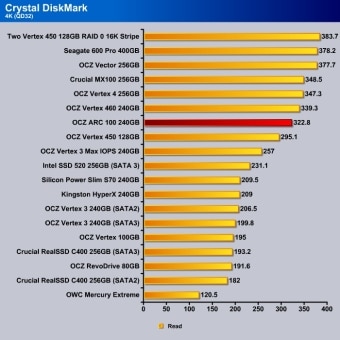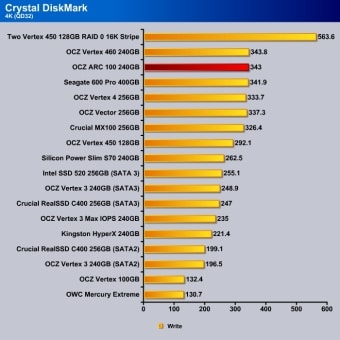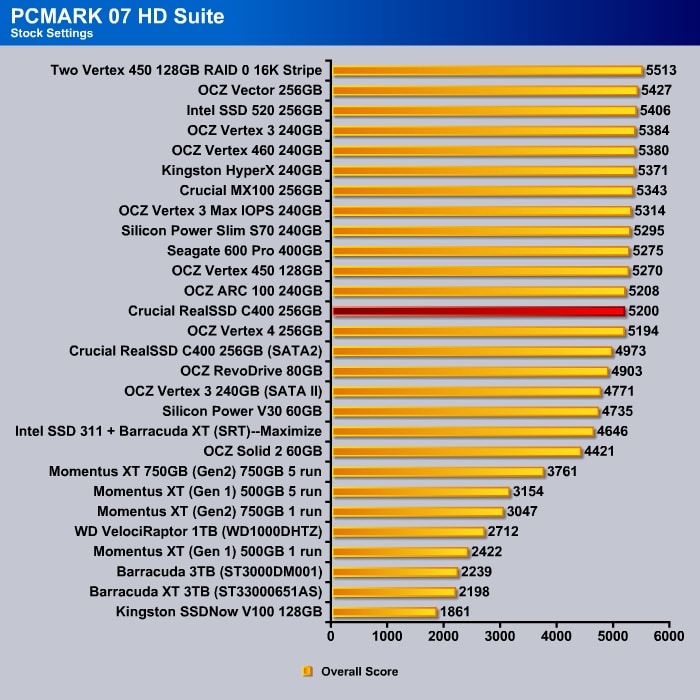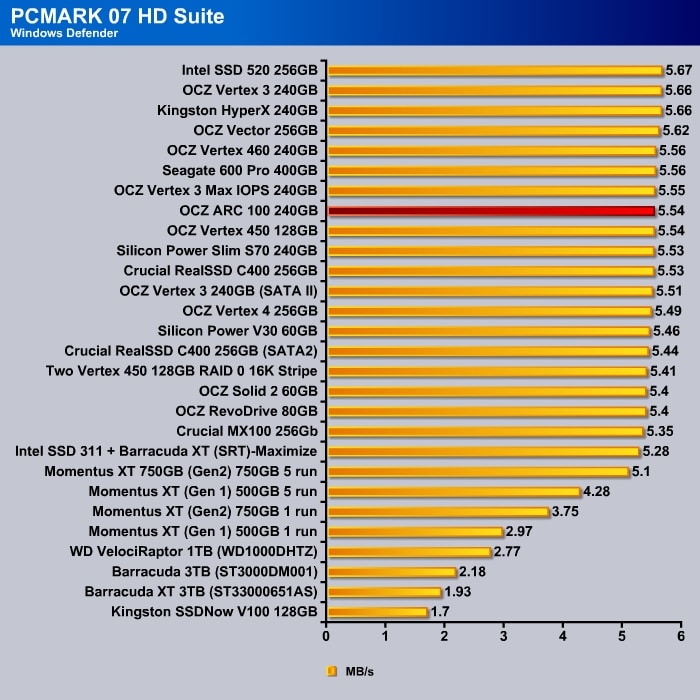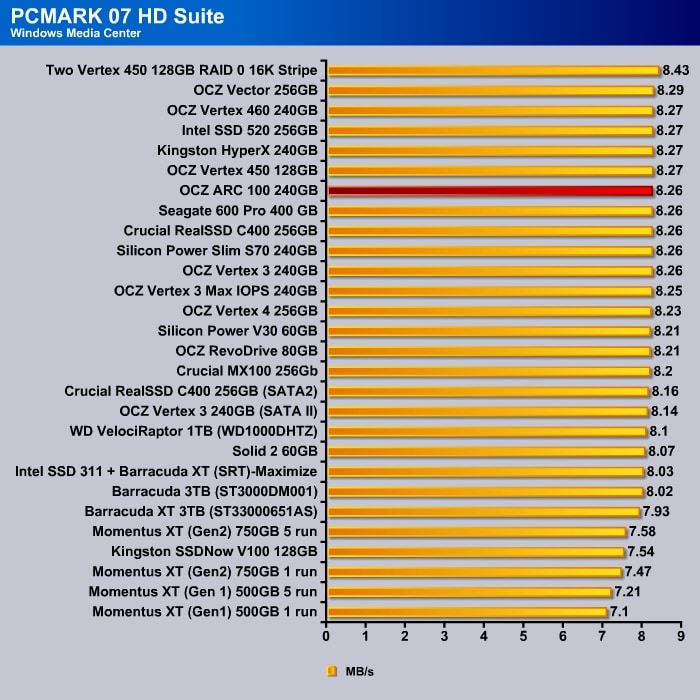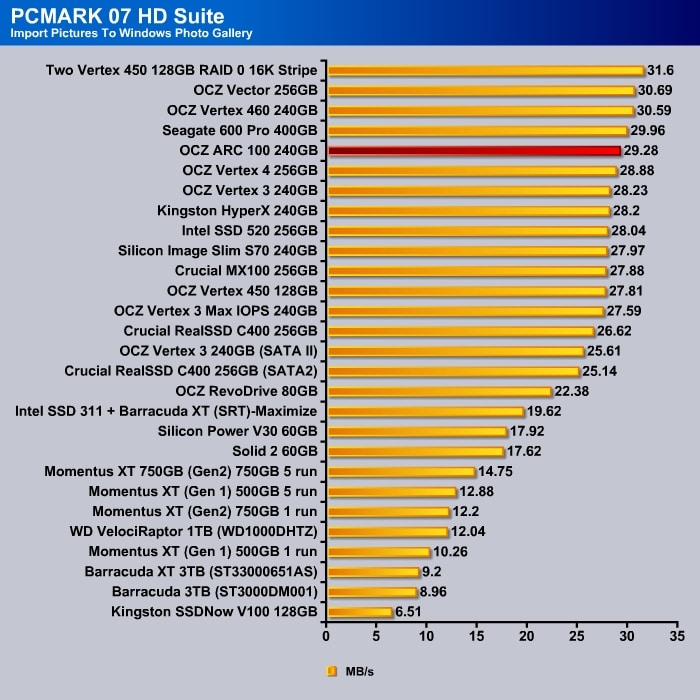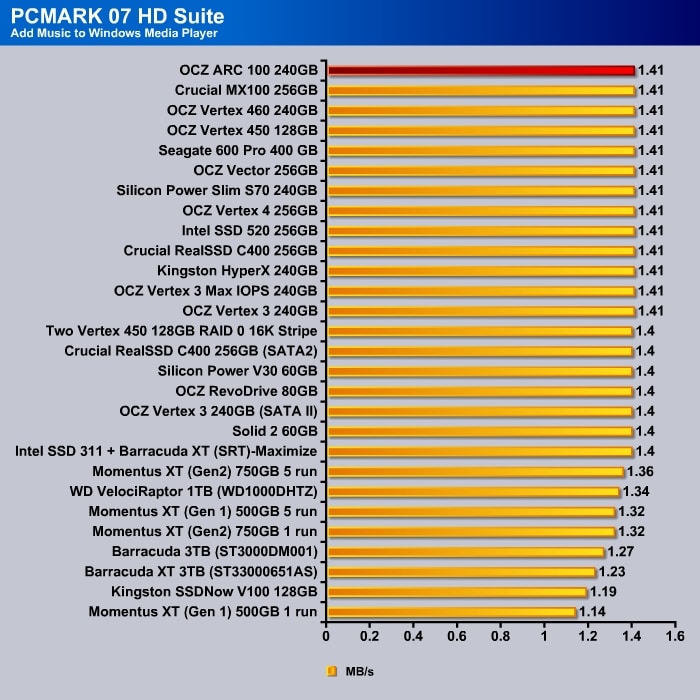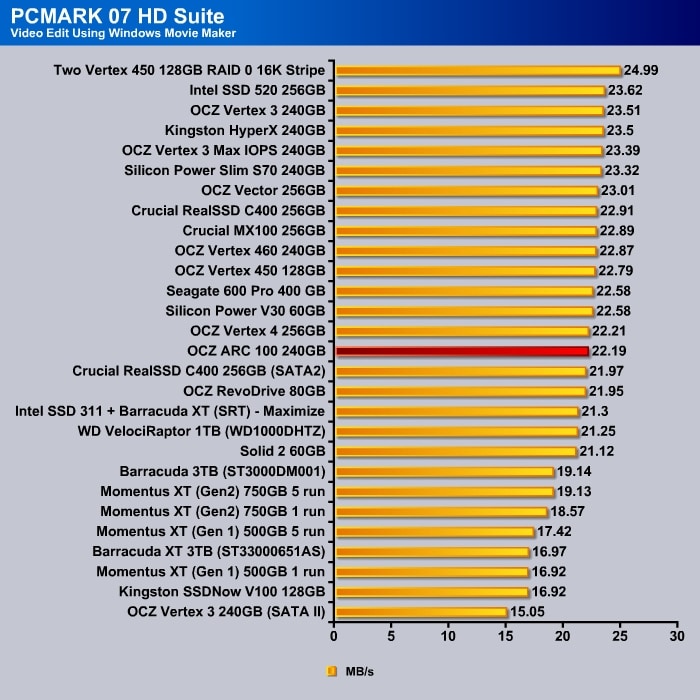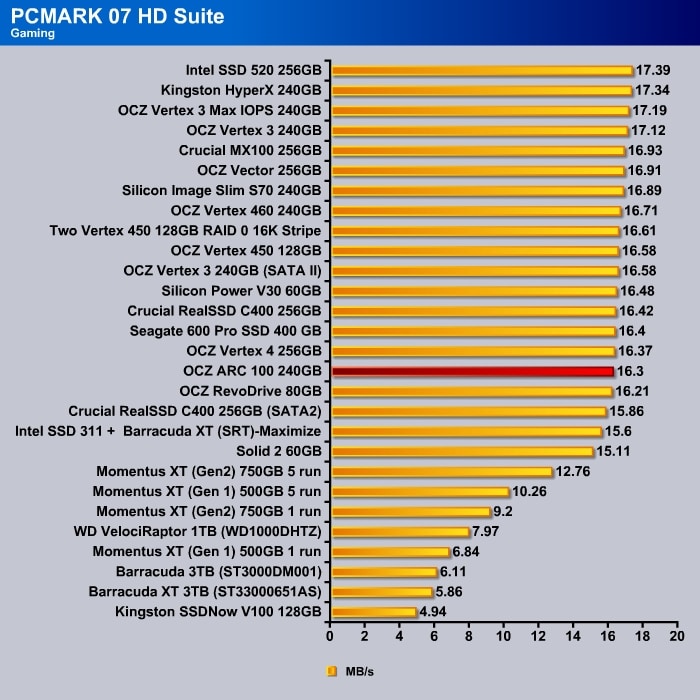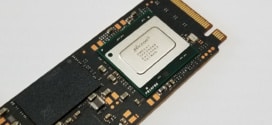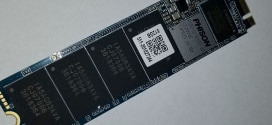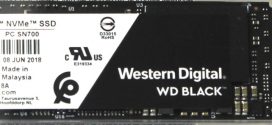Introduction
As expected, with OCZ now owned by Toshiba, OCZ would be using the in-house brew Toshiba NAND for their SSDs as oppose to Intel/Micron. OCZ has transitioned their mainstream Vertex SSDs to the Toshiba NAND already. And the latest budget line of SSD, the ARC 100, continues the trend of using all in-house made components of pairing the Indilinx controller with the Toshiba NAND.
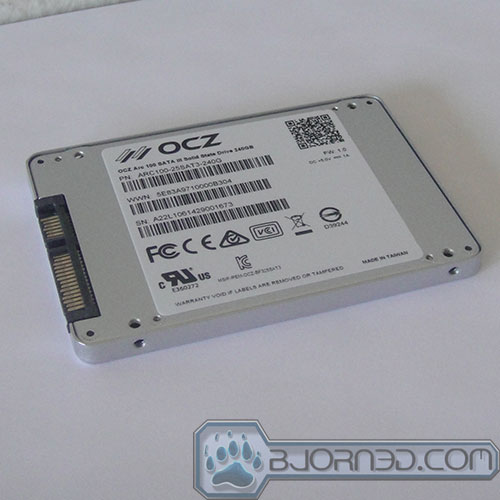
The ARC 100 is OCZ budget line of SSD that is aimed for those who is looking to upgrade their system from old, slow mechanical drive or those are already got an aging SSD that needs an upgrade. Much like what Crucial has done with the MX100 where it paired the same controller as the performance drive (in this case the M500) with a newer NAND in order to cut down the production cost for the budget drive, the ARC 100 takes OCZ’s own Indilinx Barefoot III controller and pair it with the newer Toshiba a19 nm NAND.
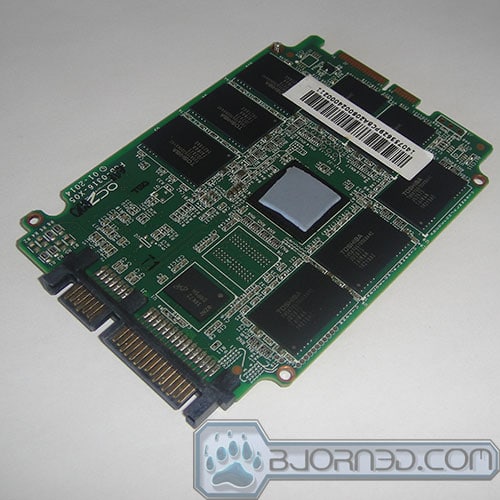
The Indilinx Barefoot M10 controller is pretty much a well-known controller already as it is the same that OCZ has been using over the last couple of years. It is found inside the Vertex 460, Vertex 450, and Vector, and Vector 150. As expected, the ARC 100 features the same technologies as other Indilinx drives such as BCH ECC correction up to 44 random bits/1KB, SMART, AES-256 encryption, TRIM, and idle time garbage collection.
Though because of its age, it lacks some of the newer encryption that is found on the Crucial MX100, namely, the TCG Opal specification. This feature maybe something that typical desktop users would not care much but without it means that the ARC 100 would not be the go to drive for the corporate users.
What the ARC 100 differ from the other Indilinx based drives is that instead of using the Toshiba 19nm MLC NAND, it uses the newer Toshiba A19 nm MLC NAND. Still built with the same 19nm fabrication process, the A19 nm is the second generation Toshiba NAND that has been refined where it is able to pack the same amount of transistor in a smaller area. Die size reduction is often associated with process reduction. However, Toshiba is able to reduce the area density without moving to a smaller processing technology which in term would save production cost. The end result is that the new chip is about 17% smaller than the first generation. At the same time, the A19 MLC NAND also improves on the write performance where the A19 chip it is able to achieve up to 25 MB/s per chip.
Each chip on the drive is still 8GB of storage and a two-bit MLC configuration. Our 240GB review sample comes with 16 chips with eight of them on one side and eight on the other side of the PCB. This is same configuration what is on the Vertex 460. Thus, the Vertex 460 and ARC 100 would feature the same numbers of parallelism for the same capacity drives.
| Storage Capacity (GB) | 120 | 240 | 480 |
| Seq read (MB/s) | 475 | 480 | 490 |
| Seq write (MB/s) | 395 | 430 | 450 |
| 4k random read | 75K | 75K | 75K |
| 4k random write | 80K | 80K | 80K |
| PRICE (USD) | 64 | 99 | 209 |
The ARC 100 comes in the storage capacity of 120GB, 240GB, and the 480GB. Looking at the chart above and we can see that OCZ manages to yield a good 120GB drive where its performance is not too far behind the larger capacity drives. The 120GB is able to deliver a same random read and write performance as the larger capacity drives. This mean that it should be able to deliver the same responsiveness as the larger drives. The only place where the drive is noticeably slower would be the sequential write where it is about 9% slower than the 240GB drive. The 120GB drive maybe a good choice to consider if you are pinching every single pennies but with the price difference of just $35, it would probably be a better option to go with the 240GB drive.
The new A19 nm does not seem to be impacting the NAND’s endurance as the ARC 100 retains the same endurance rating as the Vertex 460 where it is rated for 20GB per day write. It also also carried the same 3 year warranty as the Vertex 460. This works out to be 21TB of data over the 3 years period. This is not as long as other drives such as OCZ’s own Vector 150 with 50GB daily write rating but should be sufficient for typical desktop workloads. To sweeten the deal, the ARC 100 includes the ShieldPlus warranty where the warranty is simply based on the serial number of the drive and no longer requires a receipt for the proof of purchase. Under the ShieldPlus, if a drive needs a replacement, OCZ will ship a brand new advanced replacement first along with a prepaid return label to the customer. This is definitely a plus if you ever need to have your hardware replaced.
Despite using the same controller, the ARC 100’s Barefoot M10 controller is clocked a bit lower than the 352MHz M10 on the Vertex 460. Looking at the chart below and we can see that the ARC 100 is about 10% slower than the Vertex 460. The biggest impact would be the random read where there is about 20% difference.
| ARC 100 | Vertex 460 | Vector 150 | Crucial MX100 | |
| Seq read (MB/s) | 490 | 545 | 550 | 550 |
| Seq write (MB/s) | 450 | 525 | 530 | 330 |
| 4k random read | 75K | 95K | 100K | 85K |
| 4k random write | 80K | 90K | 95K | 70K |
| Endurance (TB) | 21 | 21 | 91 | 72 |
The ARC 100 is going directly against the Crucial MX100 so we include the MX100 in the chart above. Compare the specs and we can see that the ARC 100 has a higher IOPS for the random writes but lower IOPS for the random read. The ARC 100 also has an advantage with the sequential write over the Crucial MX 100. Though the Crucial MX100 is rated with 72TB of writes vs the 21TB writes on the ARC 100 since Crucial rates their drive with 50GB writes over 3 years as oppose to 20 GB over the same 3 years.
The ARC 100 has a rated idle power of 0.6 watts and active power of 3.45 watts. While the idle power is the same as other OCZ drives, the load power is higher than the 2.7 watts found on the Vertex 460. This is a bit unfortunate as if you are going to replace the drive on your laptop, it could mean lower battery life than what the Vertex 460 can offer. Still, it is much lower than a mechanical drive and if you are going to be using the ARC 100 in a desktop, then the minute difference would not matter much to you.
OCZ usually bundles their SSDs with the Acronis True Image HD cloning tool and a 3.5” desktop adapter. Though to bring the cost down, the ARC 100 misses either one of these two accessories. The 3.5 desktop adapter should not be much of an issue as most system should have space for a 2.5” drive. Though the cloning software can be useful if you are thinking of upgrading the existing hard drive to an SSD.
TESTING & METHODOLOGY
To test the drive, we cloned our test rig drive to the SSD. It is the same test drive we’ve been using on all of our drive testing and is nothing more than a clean Windows load with all the drive testing software installed, as well as all the current drivers and patches for the OS. It’s the equivalent of doing a fresh load of OS from the disc but takes a lot less time and ensures that every drive tested uses exactly the same OS load and drivers. Nothing that may effect the outcome of the testing procedure can creep in. We ran all of the tests a total of 3 times and averaged those results. The Average of the three results are presented here. In the case of a pictorial benchmark we ran the bench 3 times and picked the median result. As with most SSD testing differences from run to run are minimal and the median result is a good indication of what you can expect from the drive. We ran our usual battery of tests on the drive, and used it as the primary boot drive during testing. All of the drives tested were used as the primary boot drive during testing. That’s a more realistic test than strapping the drive in and testing it with a bare format or as a non-boot drive and it represents real life transfer rates, much like you can expect when you install and operate the drive in your own system. Each test was performed 3 times and the average of the 3 test run is reported here.
Test Setup
| Test Setup | |
| Case Type | None |
| CPU | Intel Core i7 3770K |
| Motherboard | Gigabyte GA-Z77-UD3H |
| Ram | Kingston HyperX 1600 |
| CPU Cooler | Prolimatech Megahalem |
| Storage Drives |
|
| Optical | None |
| GPU | PNY GTX 670 |
| Case Fans | 120mm Fan cooling the mosfet CPU area |
| Docking Stations | None |
| Testing PSU | Cooler Master UCP 900W |
| Legacy | None |
| Mouse | Microsoft Intellimouse |
| Keyboard | Logitech Keyboard |
| Gaming Ear Buds | None |
| Speakers | None |
Iometer
The most obvious comparison for the ARC 100 would be the Crucial MX100 as both drives are competing at the similar price range. While the ARC 100 is not slow by any means, the MX100 definitely has a better performance. At queue depth of 1, the ARC 100 scored 27.7 MB/s, trailing the MX 100’s 31 MB/s, or 10%.
The random write for the ARC 100 is interesting. At queue depth of 1, it delivers good result of 75 MB/s, putting it at the same place as the MX 100. However at queue depth of 3, the drive took a dip with 188 MB/s transfer rate, much slower than many other 256GB drives and the MX 100. Then at queue depth of 32, it springs back to the top spot with 337 MB/s. Unfortunately, despite it having an excellent performance at high queue depth, for most desktop workloads that uses only a few queue depth, the ARC 100 would lag behind the competitor.
The sequential read for the ARC 100 is good with 368 MB/s at queue depth of 1 and 474 MB/s at queue depth of 32. It edges out the Crucial MX 100 at low queue which again is where desktop workloads tends to be.
Sequential write is an area that the Crucial MX 100 cannot compete since it lacks enough NAND to fully take advantage of the parallelism. Here we can see that the ARC 100 performs well that it is keeping up with the Vertex 4.
AS SSD
We turn to AS SSD to see how a drive handles incompressible data. Barefoot III controller does not do data compression like the SandForce controller so drives based on such controller often performs rather well with incompressible data. Here the ARC 100 again trails the MX 100 about 10%.
Random write for the incompressible data shows similar result where the ARC 100 trails behind the MX 100 by 5% at low queue but at higher queue, the ARC 100 edges out the MX 100.
Sequential read for the ARC 100 scored 430 MB/s, faster than SandForce drives but slower than the Vertex 460 and the MX 100.
Sequential write, however, has the ARC 100 coming in at 20% faster than the MX 100 with 412 MB/s.
Crystal DiskMark
The ARC 100 does well in the 512K write in CrystalDiskMark, beating out the MX 100 and just trailing behind other Indilinx Barefoot drives.
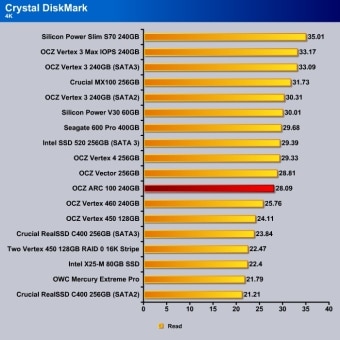
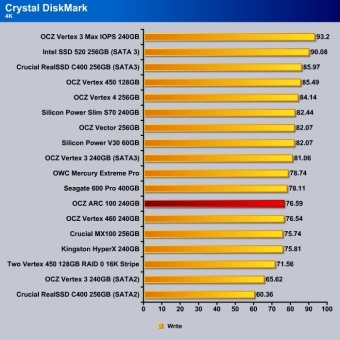
The random read and write largely mimics what we have seen so far where the drive is trailing behind the MX 100 and more expensive Indilinx based drives.

So is the sequential read and write.
PCMARK 7
The ARC 1000 scored 5200 points in the PCMark 7 HD suite test. This is ahead of the Vertex 4 but behind the ARC 100 and the more expensive 240GB drives. The drive would still offer you great performance compare to any mechanical drives or even the hybrid drives.
 Conclusion
Conclusion

For OCZ, using the tried and tested Indilinx Barefoot III controller for the ARC 100 means that it won’t get the latest technology such as Microsoft eDrive, and TCG Opal encryption. Which is a bit unfortunate as it limits the ARC 100 to be used in a corporate environment. However, for most desktop users, these features are not going to matter much. The good news is that by using the proven controller means that the ARC 100 should be just as reliable as other Barefoot III drives. A quick search on Newegg’s review on latest OCZ drive from the last couple of years that uses Barefoot controllers shows that the reviews are generally positive with four stars. While this may not guarantee the ARC 100’s reliability, this does shows us that the drives that uses Barefoot III controllers from OCZ seems to be doing much better than it used to be. The controller should be bug free and much more reliable. After all, there is no point of having the fastest drive if it is prone to failure that destroys the most precious data.
Compare to what else is on the market, we feel that the Crucial MX 100 offers a better overall package than the ARC 100 in terms of overall performance. If all things being equal, we would probably choose the MX100 over the ARC 100 for the extra performance boost. However, we would not mind putting the ARC 100 in our system either. It is still a good budget drive. Anyone who is looking for a drive to replace older, smaller capacity drive or mechanical drive would certainly appreciate the boost in performance offered by the ARC 100. The ARC 100 is priced rather competitive against the competition. It comes with the same 3 year warranty as the competitors but OCZ’s ShieldPlus Warranty program is really one of the kind in the SSD market. Anyone anyone who is ever need to do an RMA would surely appreciate the advanced replacement program. The ShieldPlus program alone makes the ARC 100 a very attractive purchase.
Review Overview
Performance - 7.5
Value - 9.2
Quality - 9
Features - 9.3
Innovation - 8
8.6
OCZ ARC 100 240GB
The ARC 100 delivers good performance for its price. It may not be the fastest drive at its price bracket but OCZ sweeten the pot with the one of the kind ShieldPlus warranty.
 Bjorn3D.com Bjorn3d.com – Satisfying Your Daily Tech Cravings Since 1996
Bjorn3D.com Bjorn3d.com – Satisfying Your Daily Tech Cravings Since 1996
